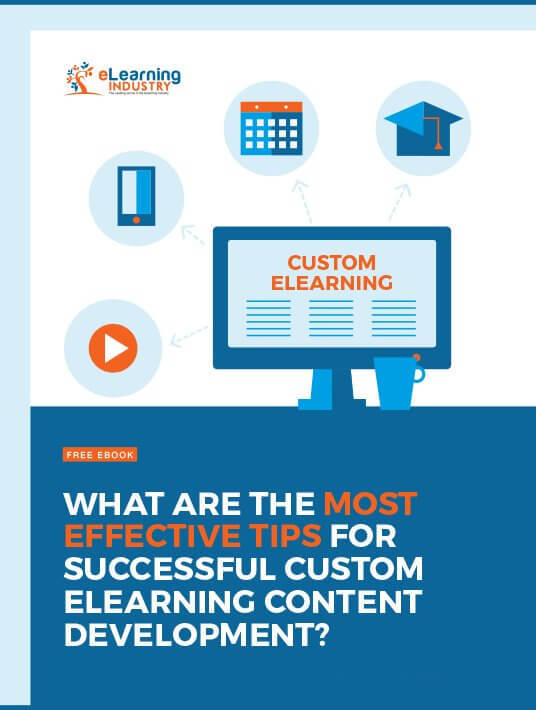In all of my experiences, I’ve found Project Management principles and the backwards design framework are the most essential tools in any environment to help guide the development of custom eLearning materials.
1. Start With Learning Objectives And Design Backwards
I am a firm believer in the backwards design approach. This model asks you to first clearly describe what a learner should know or be able to do at the end of your training. Having clear learning objectives in mind, gives you a specific target to aim for. Then, when you inevitably encounter challenges implementing a design, you can always adjust or find a new route to those same goals.
Often, when we are working with Subject Matter Experts at the very beginning of a custom eLearning project, we naturally get ideas for ways that we can deliver the material. This is our creative wheels in motion and it's definitely not something to ignore. Where this gets us into trouble is when we start working on planning or building out those specific ideas, rather than first establishing clear and measurable learning objectives.
Subject Matter Experts themselves can also get caught up in all the fun things that we can help them create. I have been in many meetings where the client I was working with was excited or nervous about a particular idea or feature, and it derailed the entire meeting. Backwards design can help us manage these situations by refocusing the conversations on the learning objectives and what is essential to meet those goals. It can also help relieve anxiety that anyone might have about necessary skills or resources, but are really beyond the scope of what is essential to help learners complete the learning objectives.
Having a goal in mind leaves you open to having many ways to meet those learning objectives. It also allows us to be more flexible with our designs and gives us more options when working to fit time or budget constraints.
2. Don't Skip The Design Documents
It’s so tempting to jump right into the tech tools before creating design documents. This is especially true when working on new and exciting custom eLearning projects. However, this greatly increases the amount of time required for design, leading to exploding costs and more development time.
Have you ever been halfway through an eLearning module and had a great idea that would make the entire module so much better? If you have already done a first pass at half the design work, then you have to choose to either abandon the idea, because you don’t have the time to redo everything you’ve already done, or rework everything you’ve already done. This is a really frustrating situation, and I have been there too.
I understand that sometimes we need to actually play with the tools to figure out how we are going to segment the information between slides or to test out an interaction we have in our head. I’m not saying that you shouldn’t do some mockups and testing, but you should limit this as much as possible. Instead, you should do high-level design documents, make some mockups and test functionality, and then update the design documents before you start building out the entire project. Iterate as much as needed, and lean on Agile Project Management processes to help manage this. Just don’t skip the design documents.
3. Describe A Real-World Application, Then Figure Out How To Build It
Often, eLearning designers start brainstorming how they can meet instructional goals with the tools and technological approaches they use every day. The problem with this is they will be mentally limited to only what they have experience with in recent projects, or constrained by their current skills with any given tool. Even the most talented eLearning developer can have their creativity stuck inside the box when approaching a design project this way. We can look to backwards design again here to help us find new approaches.
To find your goals for authentic activities and applications, think of how this information or activity is shared or practiced in the real world. Spend time imagining or observing how these skills are used in the workplace to give yourself a thorough understanding of what the application actually looks like. Then, try to design a way to mimic that in the eLearning environment.
This approach will naturally lead you to try new things in the same software you use every day. It will also send you on a search for new tools to design your vision. This is, honestly, how I have stumbled into some of the coolest tools and functionalities I’ve found, simply because I was determined to make something, and went looking for a way to make it happen.

